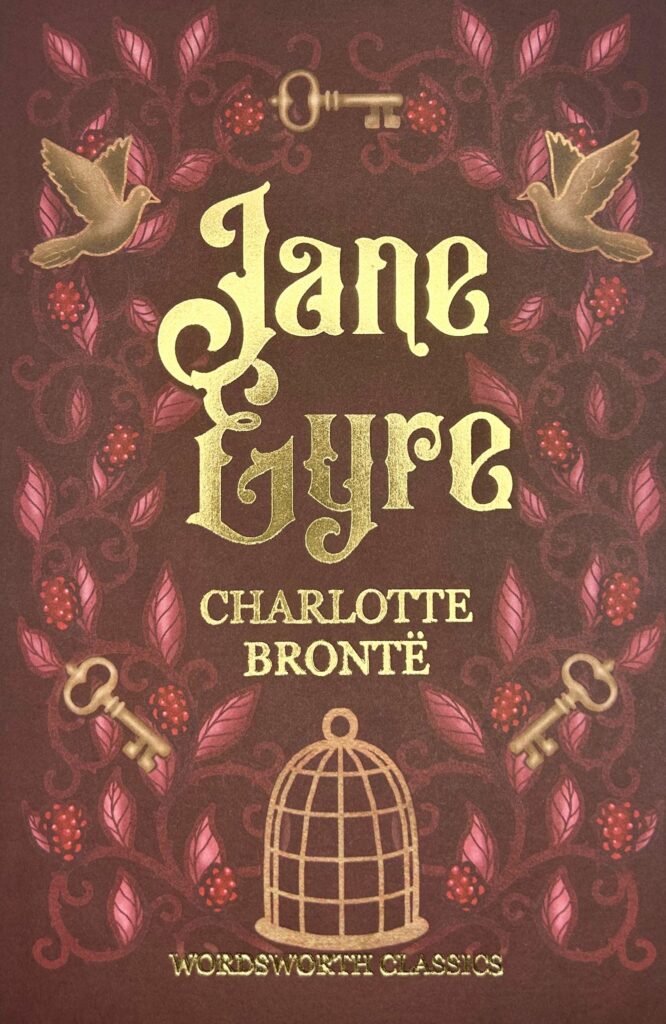
Never judge a book by its movie…
Sally Minogue writes: Never judge a book by its movie…
On Boxing Day my sister and I sat down in comfortable anticipation to watch the television showing of the 2011 film Jane Eyre. Christmas obligations had been discharged and its pleasures enjoyed; the trials of New Year lay ahead. Here was a treat – a classic novel we were familiar with, but one reinterpreted in a new way, to be enjoyed in the comfort of our armchairs with a glass of wine to hand. My more puritan literary-critical self was in abeyance and I sat back with genuine interest to see – yet again – what a movie director would make of Charlotte Brontë’s superb fiction. It’s easy to forget, in these days when visuals (and indeed texts) dance at the touch of our smartphones, how extraordinarily different a printed text is from a moving film. The Brontë novels were as textual as you can get: written and revised in longhand, a fair copy made laboriously to send to prospective publishers, the works when accepted for publication typeset in an old-fashioned way, with proofs corrected again in the author’s hand – with, in Charlotte Brontë’s case, a word she wanted to alter or omit blacked out unreadably in the manner of contemporary redactions. And text translates into narrative voice: what makes Jane Eyre’s story distinctive is that she tells it herself.
None of this has deterred attempts to turn Brontë novels into movies, which involve an entirely different kind of narrative – visual, auditory, characters given human form rather than existing in the reader’s mind’s eye, mood changes aided by music, lightly filtered through the camera, and crucially no single point of view. But the makers of the early Hollywood glossy versions saw exactly what they wanted in a novel such as Jane Eyre: a big romantic story, a dramatic natural backdrop, larger-than-life characters, including unusually a female protagonist to match the male, and Gothic elements which gave free rein to the atmospherics department. Director Robert Stevenson took full advantage of these aspects in his 1944 Jane Eyre, with Orson Welles as Rochester and Joan Fontaine as Jane. This remains, in my view (and in the view of the film critic Philip French, The Observer, September 11th, 2011), the best movie version of the novel. While it cuts swathes through the story, it captures the romantic intensity not just of the central human relationship but of the novel’s natural and supernatural elements. Jane’s first meeting with Rochester, with Pilot rushing forward, closely followed by his dark master astride his horse, which rears in alarm at the strange apparition of Jane – this contains all the elements of romance, superstition, wild nature, and equivalence of power between man and woman, which pervade the novel. That the scene, like the rest of the film, was shot on a Hollywood sound stage only makes it the more extraordinary.
The 2011 version, directed by Cary Fukunaga, by contrast, takes great pains to use authentic Northern landscapes. These are beautifully shot by Adriano Goldman to convey the bleak yet lyrical intensity of the natural and the emotional world of the film. The film’s official website shows the care Fukunaga and his location director took to match places to Brontë’s detailed descriptions (focusfeatures.com where links can be found to other references in this piece). The opening shots, with Jane a tiny figure labouring across a hostile landscape, as she flees from Thornfield and Rochester’s seductive embrace into an unaccommodating wilderness, are redolent of Hardy as well as Brontë. Jane’s acute distress, and her stubborn fortitude in struggling with it, are caught brilliantly in this image. Fukunaga’s justification for his scriptwriter Moira Buffini’s stark alteration to the original narrative is that ‘you’re starting out at her most desperate – a dramatic moment … it’s an instant mystery. Inevitably, the first person voice is also missing, though Mia Wasikowska as Jane has a limpidly expressive face, and she articulates many of the key thoughts from the novel, in a near-approximation to Brontë’s language and sometimes in her actual words.
To my mind, however, beginning the film with Jane’s flight disrupts completely Brontë’s narrative intention to show the development of her plain heroine from a suffering child into a passionate self-sustaining adult and finally to fulfilled but still independent wife. And there’s nothing to equal the Gothic intensity of the 1944 film’s first encounter between Jane and Rochester, played in what a contemporary review in the New York Times called Welles’ ‘hot, fuliginous’ style. Yes, I had to look it up too. It means smoky or sooty but perhaps was intended to capture the brooding quality of both Welles’ acting, and of the dramatic light-and-shade of the shooting style. After all, surely the best filmic match for Brontë’s print is black and white.
Sally Minogue
Books associated with this article
